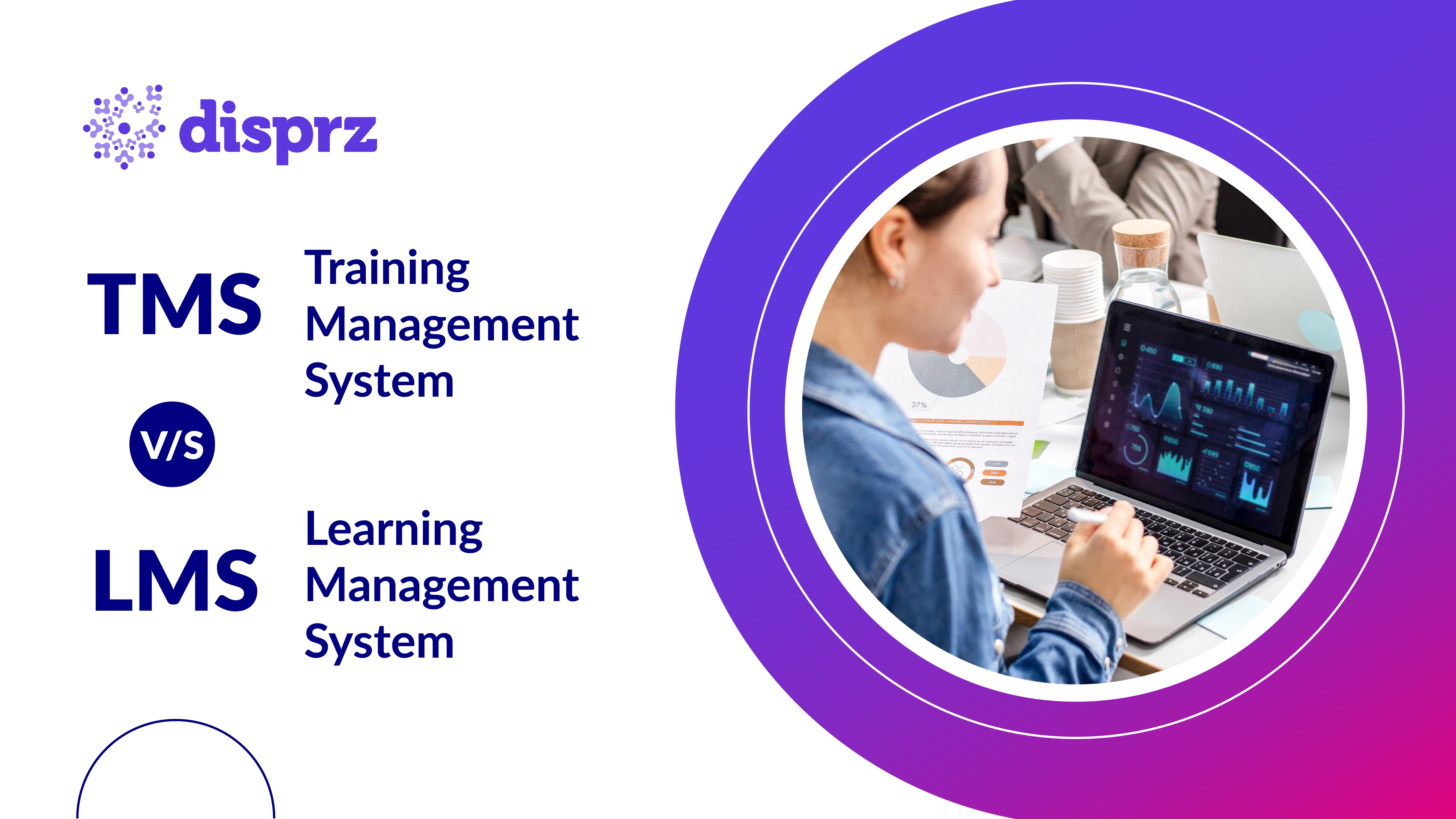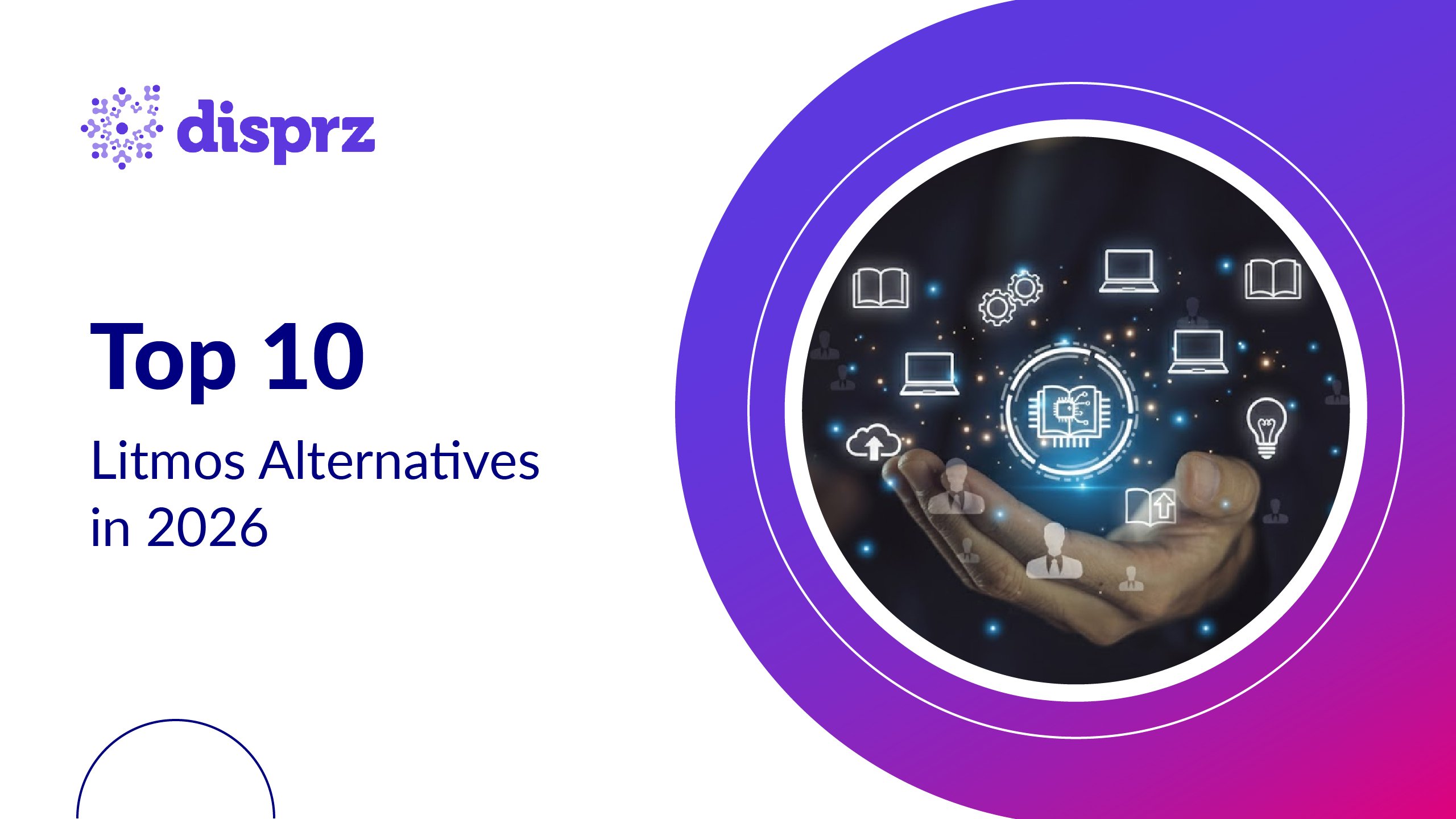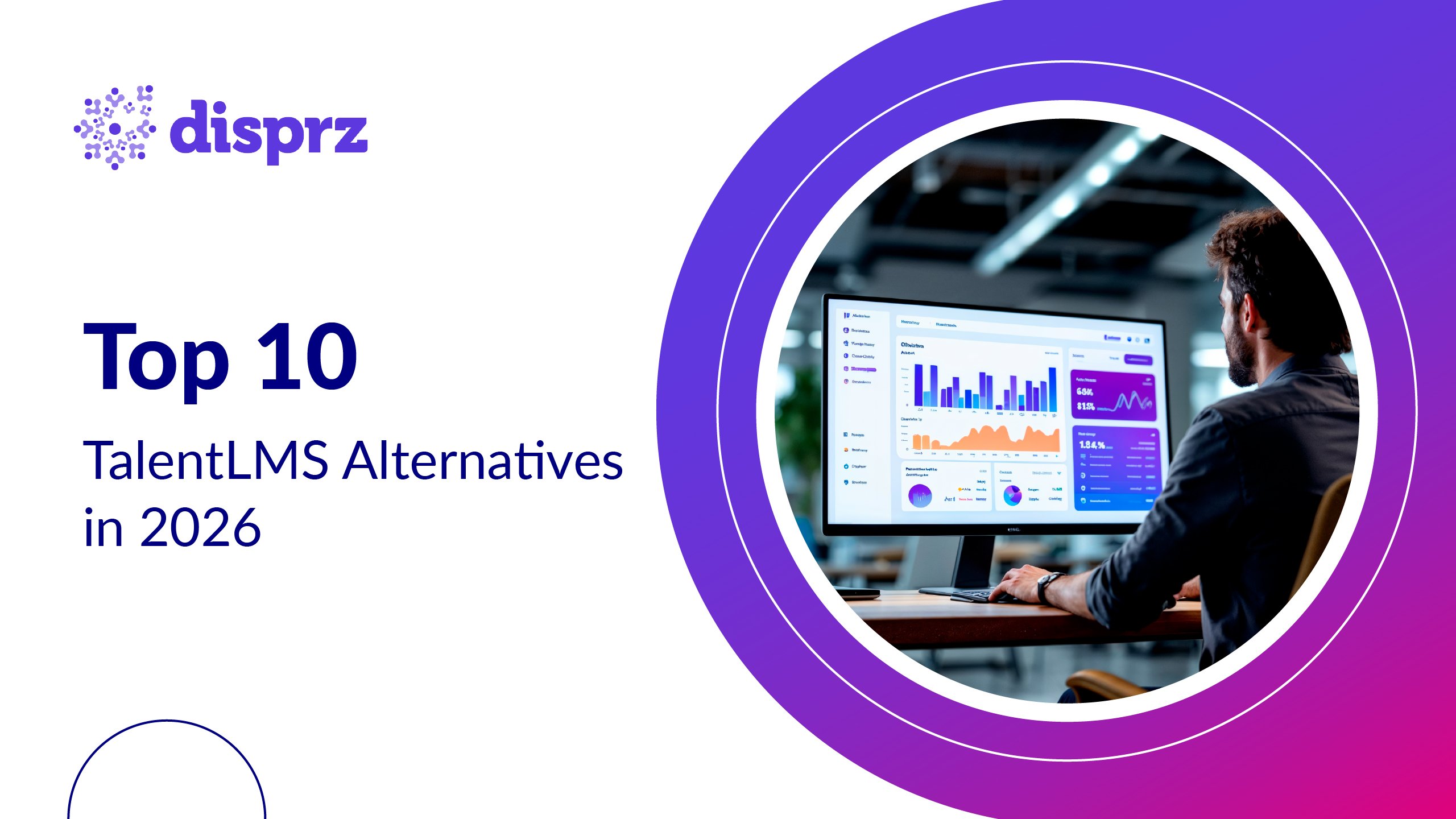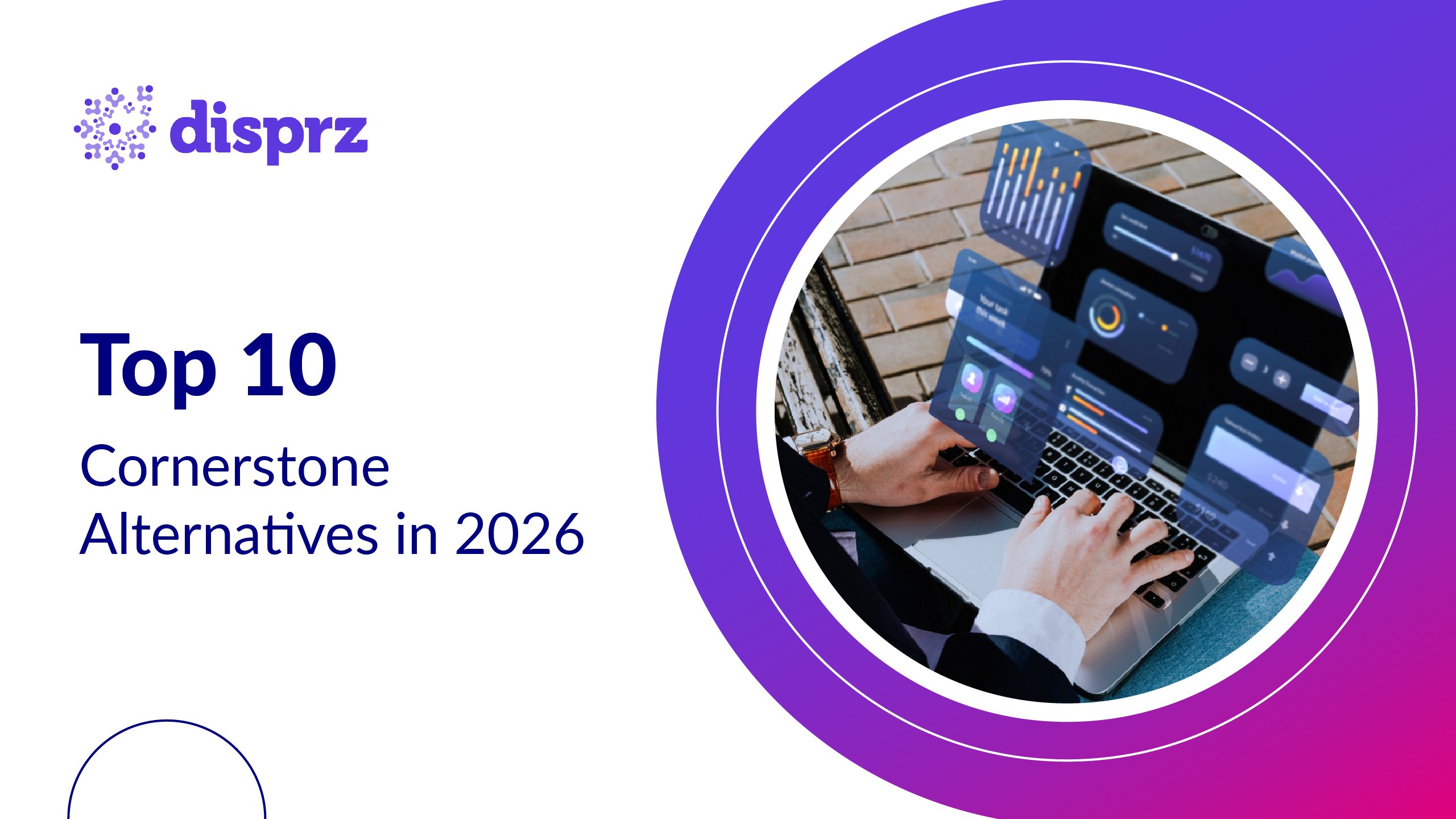Corporate learning has always mirrored the way we work. When employees gathered in classrooms, enterprises relied on paper registers and training coordinators to keep everything organized. The Training Management System (TMS) was born out of this era, designed to schedule sessions, assign trainers, and demonstrate compliance to regulators.
Then, the world of work underwent significant changes. Globalization scattered workforces across time zones. Mobile technology allowed people to learn on the go. Remote work accelerated the demand for digital-first learning. Out of this shift, the Learning Management System (LMS) became the new foundation - hosting courses, delivering content online, and tracking learner progress at scale.
Today, in 2025, HR and L&D leaders are caught between two worlds. The boundaries that once made the TMS and LMS distinct have blurred. Many industries, such as aviation and healthcare, still rely on physical, compliance-driven training that only a TMS can manage. At the same time, most enterprises are scaling digital learning, making the LMS their central hub.
This creates a pressing question for CHROs, CLOs, and L&D heads:
Should we invest in a TMS, an LMS, or both?
The answer depends not only on your industry but on your workforce model, compliance pressures, and growth ambitions. Let’s walk through each system, their strengths and weaknesses, and how enterprises should make the call.
What is a Training Management System (TMS)?
A Training Management System is like the backstage crew of a corporate learning program. It does not teach. It does not engage employees directly. Instead, it makes sure the lights are on, the stage is set, and the trainers know where to stand. In other words, it manages the logistics that allow classroom and instructor-led training (ILT) to run smoothly.
Core Functions of a TMS

A TMS focuses on four main areas:
-
ILT Scheduling – It automates the scheduling of instructor-led sessions, ensuring no double bookings or last-minute clashes.
-
Venue and Trainer Allocation – It assigns the right trainer to the right class, and books classrooms, labs, or simulation centers accordingly.
-
Resource Management – From training manuals to specialized equipment, the TMS ensures all required resources are available.
-
Certification Tracking – It maintains detailed records of who attended, who passed, and whose certification is expiring, giving enterprises a defensible compliance trail.
Example: An airline uses a TMS to schedule pilot simulator sessions, assign trainers, and automatically notify pilots whose certifications are about to expire.
Where a TMS Excels
TMS platforms are built for industries where compliance and physical certifications are non-negotiable.
-
In aviation, regulatory agencies demand proof that every pilot has completed simulator drills.
-
In healthcare, hospitals must track every surgeon’s continuing education units.
-
In oil & gas, safety drills must be logged and auditable.
Without a TMS, these organizations risk regulatory fines, operational shutdowns, or worse — accidents.
Limitations of a TMS
However, the TMS model has drawbacks in 2025:
-
It is not learner-centric. Employees often find it clunky and detached from their learning journey.
-
It has weak digital integration. Many TMS platforms struggle to blend ILT with e-learning or mobile-first modules.
-
It offers limited scalability. Global, distributed workforces find it hard to rely on systems built for local, classroom-based training.
What is a Learning Management System (LMS)?
While the TMS works behind the scenes, the LMS is the stage itself. It is the digital environment where employees interact with content, complete modules, and track their own progress.
Core Functions of an LMS

A modern LMS typically supports:
-
Content Hosting – Courses, videos, assessments, and microlearning modules.
-
Online Training Delivery – Accessible via desktop, mobile, or integrated virtual classrooms.
-
Progress Tracking – Learners and managers can see completion, scores, and certifications.
-
Compliance Reporting – Automates the generation of audit-ready compliance reports.
Example: Imagine a retail chain rolling out a new sustainability training. Within just two days, over 100,000 frontline employees across multiple countries log in from their mobile devices. Every completion is automatically tracked in the LMS, giving leaders real-time visibility into adoption at scale.
Where an LMS Excels
-
Blended or digital-first learning – Supports virtual classrooms and e-learning side by side.
-
Mobile access – Critical for distributed or frontline workers.
-
Scalability across geographies – Can serve a workforce of hundreds of thousands simultaneously.
-
Learner engagement – Gamification, leaderboards, and AI-driven recommendations improve adoption.
Limitations of an LMS
Traditional LMS platforms are not without weaknesses:
-
They sometimes reduce learning to a compliance checklist (“Did they complete it?”).
-
Many lack personalization or AI-driven learning pathways, which are now expected by modern learners.
-
Legacy LMS tools can feel rigid and slow compared to today’s agile workforce needs.
Discover how an AI-powered LMS elevates workforce readiness.
Training Management System vs Learning Management System: Key Differences
It is tempting to think of TMS and LMS as competing systems. In reality, they serve different, though sometimes overlapping, purposes.
TMS vs LMS: Detailed Comparison
| Dimension | Training Management System | Learning Management System |
|---|---|---|
| Purpose |
Manages ILT logistics (schedules, venues, trainers, certifications). | Delivers digital & blended learning, links to employee readiness & outcomes. |
| Users |
Admins, compliance teams, training coordinators. | Learners, managers, L&D teams, business leaders. |
| Delivery Modes |
Classroom, simulations, and face-to-face workshops. | Classroom, simulations, and face-to-face workshops. |
| Core Strength |
Precise compliance tracking & resource scheduling. | Scale, personalization, analytics, and learner engagement. |
| Weakness |
Limited learner experience, weak digital integration. | Historically weaker at complex ILT logistics. |
| Reporting | Progress, trainings assigned/completed, ROI, compliance dashboards. |
Limited learner experience, weak digital integration. |
| Integration |
Often siloed; basic HRIS/finance links. | Often siloed; basic HRIS/finance links. |
| Compliance |
Strong for physical attendance & regulatory audits. | Strong for digital compliance & automated reporting. |
| Experience |
Admin-focused, transactional. | Learner-focused, mobile, social, and adaptive. |
| Scalability |
Best for local ILT-heavy training. | Best for global, digital-first, multilingual rollouts. |
| Best Fit | Aviation, healthcare, oil & gas, safety-critical sectors. | IT, retail, banking, consulting, global enterprises. |
Do Enterprises Still Need a TMS in 2025?
The short answer: it depends on your industry.
Industries Where TMS Remains Essential
Some industries cannot move away from physical, compliance-heavy training — their work depends on it.
-
Aviation – Every pilot must log simulator drills and renew certifications. A TMS ensures regulators have a verifiable record before a pilot steps into the cockpit.
-
Healthcare – Surgeons, doctors, and nurses must prove continuing medical education hours. A TMS provides the audit trail hospitals need to stay accredited.
-
Oil & Gas – Safety drills, hazard simulations, and equipment checks must be physically recorded. Without a TMS, organizations risk fines, shutdowns, or accidents.
These industries cannot compromise because regulatory fines, lawsuits, or accidents are at stake.
Why LMS is Replacing TMS in Most Sectors
For industries where digital or hybrid training suffices, LMS has overtaken TMS.
-
Mobile learning makes training available anywhere.
-
AI analytics measure employees’ progression and predict knowledge gaps.
-
Compliance automation ensures audit trails without manual effort.
Scenario: Think of compliance training at scale. An organization with 20,000 employees relies on a TMS to manage every certificate manually. When it switches to an LMS, the system delivers compliance modules digitally and integrates virtual instructor-led sessions. Training becomes faster, records stay automated, and administrative costs drop by nearly half. This shift shows how an LMS absorbs much of what a TMS handles, especially outside high-stakes industries.
When Both Systems Are Needed
In highly regulated sectors, one system often isn’t enough.
-
Pharmaceuticals – Lab-based certifications must be logged through a TMS for compliance, but sales teams spread across the globe learn better through an LMS.
-
Energy Majors – Field workers need on-site safety drills tracked by a TMS, while leaders and office staff depend on an LMS for digital skills, leadership programs, and continuous development.
Why Modern Enterprises Prefer LMS Platforms
By 2025, when you look across industries, from retail to technology to manufacturing, you’ll notice a clear trend: the LMS has become the anchor of enterprise learning ecosystems. Why? Because modern L&D priorities go far beyond simply scheduling or tracking a classroom event.
Let’s break it down into four big reasons that resonate with CHROs, CLOs, and HR leaders:
1) Personalized Learning & AI-Driven Pathways
For decades, corporate learning followed the “one-size-fits-all” model. Everyone in a role went through the same induction, the same compliance modules, and the same leadership program. The result? Engagement dipped, and impact was questionable.
Modern LMS platforms flip this model. They create adaptive learning pathways that match each employee’s needs instead of pushing generic content.
-
A sales executive who struggles with negotiation but excels in product knowledge won’t be sent through a generic “Sales 101.” Instead, the LMS can push a personalized pathway with simulations, short video nuggets, and peer role-play modules on negotiation.
-
A mid-level manager in a retail chain might be flagged by AI as lacking “conflict resolution” skills, based on 360° feedback. The LMS then auto-recommends microlearning and a virtual coaching session.
2) Compliance Reporting & Audit Readiness
Compliance today isn’t a record-keeping exercise; it’s the ability to demonstrate audit readiness with speed and accuracy. In industries such as banking, insurance, and pharmaceuticals, regulators can demand proof within days.
With a TMS, this often meant manual reconciliation of attendance sheets, trainer sign-offs, and paper-based certificates.
With an LMS:
-
Compliance dashboards are real-time and exportable.
-
You can filter by geography, department, or job role in seconds.
-
Automated alerts notify managers if an employee’s certification is about to expire.
Example: Imagine a global bank that must prove to regulators that all customer-facing employees have completed anti–money laundering training in the last 12 months. With an LMS, the learning team could generate a compliance report across 50,000 employees in less than 30 minutes. With a traditional TMS, this kind of validation might have required weeks of manual cross-checks and paperwork.
3) Scalability for Global Workforces
Today’s workforce is borderless and hybrid. Enterprises hire talent across continents, and employees expect the same quality of learning whether they’re in Mumbai, Madrid, or Mexico City.
A TMS struggles in such scenarios. It was never designed to scale beyond local, classroom-first environments.
But an LMS:
-
Handles multi-language delivery for diverse audiences.
-
Supports mobile-first experiences so frontline workers in warehouses or retail stores can learn during downtime.
-
Offers role-based access, so a senior leader in Singapore and a sales rep in South Africa can both get content that feels relevant.
Example: Imagine a multinational retailer rolling out customer service training to 120,000 employees in 15 countries. With an LMS, each country could receive translated content tailored to cultural nuances, while leadership views a unified analytics dashboard for global comparison. A TMS, built for local ILT logistics, would struggle to deliver this kind of consistency and scale.
4) ROI Proof to Leadership
CFOs and CEOs are less focused on training hours or sessions scheduled. What matters to them is whether learning translates into measurable business outcomes.
Modern LMS platforms allow you to measure:
-
Time-to-competence – How fast are new hires ramping up?
-
Cost per learner – How efficient is your training spend?
-
Learning linked to KPIs – Which programs improved sales, reduced attrition, or boosted customer satisfaction?
Example: A B2B SaaS company wants to accelerate onboarding for engineers. With a modern LMS using advanced analytics, they redesign the experience and cut the ramp-up period from 90 days to 55. That reduction translates into faster project readiness, higher billable hours, and millions saved in productivity gains. A TMS alone could never surface such learning ROI metrics; it wasn’t designed to connect training with business metrics.
How to Choose Between TMS and LMS
Deciding between TMS and LMS isn’t just about technology. It’s about strategy, context, and the unique DNA of your organization. Many HR and L&D leaders overcomplicate this decision when, in reality, it boils down to answering a few structured questions.
Here’s a deeper framework to guide your thinking:
1) What Training Modes Do You Rely on Most?
-
If 70–80% of your training is classroom-based: A TMS will reduce administrative chaos. For example, a medical college hospital managing thousands of in-person clinical workshops every quarter benefits immensely from a TMS.
-
If your training is digital-first or blended: An LMS is the smarter investment. Think of a tech company onboarding engineers globally; it’s unrealistic to fly them to HQ every time.
2) How Strict Are Your Compliance Requirements?
-
High-stakes industries (aviation, healthcare, oil & gas): Regulations demand physical attendance tracking and certification. A TMS here is non-negotiable.
-
Corporate sectors (IT, retail, manufacturing): An LMS with built-in compliance automation, including digital trails, expiry alerts, and dashboards, usually covers all regulatory needs. As a modern digital learning platform, it not only simplifies compliance but also enables scalable, engaging learning experiences across diverse and distributed workforces.
3) What’s Your Workforce Size & Spread?
-
Single-site, localized workforce: A TMS might be sufficient. For example, a regional hospital network can manage all certifications with one TMS.
-
Global, dispersed workforce: LMS wins. For instance, a consulting firm with employees across 30+ countries cannot rely on a TMS to unify learning experiences.
4) What Kind of Analytics Do You Need?
-
Basic reporting (attendance, completion): TMS will do.
-
Advanced insights (learning gaps, ROI, time-to-productivity): LMS is essential. Imagine trying to justify L&D investments to the board; you’ll need the analytics muscle only an LMS provides.
5) Do You Really Need Both?
Some organizations ask,“Can’t we just have both?” The answer: Yes, but only if you truly need it.
-
If your industry requires physical ILT compliance tracking AND a digital learning scale, integration of TMS + LMS makes sense. Example: A pharmaceutical giant might run GMP (Good Manufacturing Practice) certifications via TMS while scaling leadership development via LMS.
-
For most other organizations, a modern LMS already includes basic TMS-like features (session scheduling, trainer allocation) and eliminates the need for two systems.
Key takeaway: Don’t choose based on what the system does. Choose based on what your business needs. If your vision is to simply “manage training,” using a training scheduling system, a TMS suffices. But if your goal is to “scale skills for business transformation,” the LMS is your long-term ally.
Conclusion
The TMS and LMS were born in different eras for different needs. The relevance of a TMS depends entirely on the industry. In sectors such as aviation, healthcare, and oil & gas, physical certifications and on-site drills leave no room for compromise. Regulators demand the precision and auditability that a TMS provides. For those environments, it remains essential.
But for most enterprises, the world has shifted. Compliance is now digital, scalable, and real-time. Modern LMS platforms such as Disprz not only ensure audit readiness but also go further, personalizing learning pathways, integrating virtual classrooms, and linking outcomes to business KPIs. In other words, LMS has absorbed the compliance backbone of TMS while unlocking broader workforce transformation.
The real choice leaders face in 2025 is not about software labels. It is about designing a learning ecosystem that secures compliance, scales across borders, and develops capabilities for the future. That is where a platform such as Disprz moves beyond compliance tracking, building a foundation for growth, resilience, and competitive advantage.
Discover how Disprz LMS unifies compliance, analytics, and personalized learning pathways, going beyond traditional training management.
FAQs
1) What is the difference between a Training Management System (TMS) and an LMS?
A TMS is built for managing in-person training logistics, such as scheduling sessions, assigning trainers, and tracking certifications. It ensures compliance where physical attendance is mandatory. An LMS, on the other hand, powers digital and blended learning. It hosts courses, delivers training across devices, tracks learner progress, and links learning outcomes to business KPIs. While a training management system software is admin-focused, an LMS is learner-centric and scalable.
2) Can a TMS and LMS work together?
Yes. Many enterprises in regulated industries use both. The TMS manages certifications tied to physical training, such as lab tests or safety drills, while the LMS delivers digital modules, virtual classrooms, and ongoing skills development. Together, they ensure compliance and business capability-building. However, in most sectors, a modern LMS includes scheduling, compliance tracking, and blended learning support, thereby reducing the need for a separate TMS.
3) Is a TMS still relevant in 2025?
A TMS remains relevant in high-stakes industries such as aviation, healthcare, and oil & gas, where regulations demand physical training and certification. Pilots, surgeons, and field engineers must log simulator drills, continuing education, or safety inspections that only a TMS can capture. For most other industries, however, a next-gen LMS already provides digital compliance tracking, blended delivery, and scalability, making a TMS redundant.
4) Why are enterprises moving from TMS to LMS?
Enterprises are shifting to LMS platforms because they offer scalability, mobility, and learner engagement beyond compliance. While a TMS focuses on administrative tracking, an LMS provides digital-first delivery, personalized pathways, and AI-driven recommendations. It reduces manual effort, integrates with HR systems, and generates real-time dashboards for audits. This combination of compliance assurance and business-linked analytics makes LMS a better fit for global enterprises.
5) What features should I look for in a modern LMS?
A modern LMS should ensure compliance while enabling personalized growth. Disprz LMS, for example, offers mobile-first learning, multilingual support, and blended delivery. It includes gamification to drive engagement, assessments and feedback tools to measure learning impact, and compliance dashboards for audit readiness. More importantly, it creates adaptive learning journeys and analytics that link training outcomes to business KPIs.









